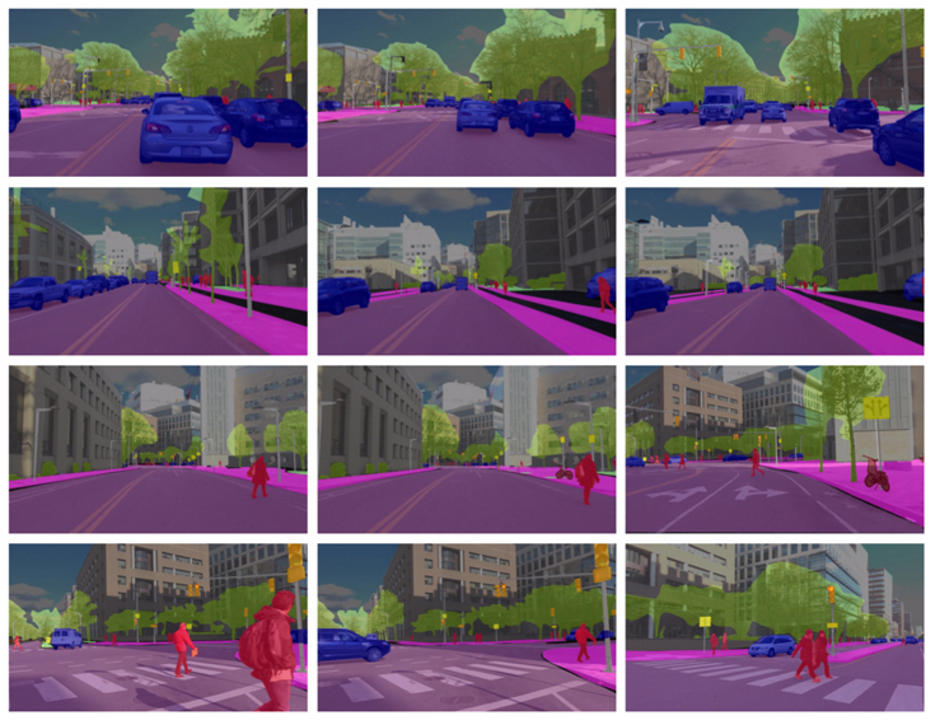LANGUAGES

CAMBRIDGE, MA – JUNE 15, 2020 – How can we train self-driving vehicles to have a deeper awareness of the world around them? Can computers learn from past experiences to recognize future patterns that can help them safely navigate new and unpredictable situations?
These are some of the questions researchers from the Massachusetts Institute for Technology (MIT) AgeLab at the MIT Center for Transportation & Logistics and the Toyota Collaborative Safety Research Center (CSRC) are trying to answer by sharing an innovative new open dataset called DriveSeg.
Through the release of DriveSeg, MIT and Toyota are working to advance research in autonomous driving systems that, much like human perception, perceive the driving environment as a continuous flow of visual information.
“In sharing this dataset, we hope to encourage researchers, the industry, and other innovators to develop new insight and direction into temporal AI modeling that enables the next generation of assisted driving and automotive safety technologies,” says Bryan Reimer, Principal Researcher. “Our long-standing working relationship with Toyota CSRC has enabled our research efforts to impact future safety technologies.”
“Predictive power is an important part of human intelligence,” says Rini Sherony, Toyota Collaborative Safety Research Center’s Senior Principal Engineer. “Whenever we drive, we are always tracking the movements of the environment around us to identify potential risks and make safer decisions. By sharing this dataset, we hope to accelerate research into autonomous driving systems and advanced safety features that are more attuned to the complexity of the environment around them.”
To date, self-driving data made available to the research community have primarily consisted of troves of static, single images that can be used to identify and track common objects found in and around the road, such as bicycles, pedestrians or traffic lights through the use of “bounding boxes.” By contrast, DriveSeg contains more precise, pixel-level representations of many of these same common road objects, but through the lens of a continuous video driving scene. This type of full scene segmentation can be particularly helpful for identifying to explore data patterns as they play out over time, which could lead to advances in machine more amorphous objects – such as road construction and vegetation – that do not always have such defined and uniform shapes.
According to Sherony, video-based driving scene perception provides a flow of data that more closely resembles dynamic, real-world driving situations. It also allows researchers learning, scene understanding and behavioural prediction.
DriveSeg is available for free and can be used by researchers and the academic community for non-commercial purposes here. The data is comprised of two parts. DriveSeg (manual) is 2 minutes and 47 seconds of high-resolution video captured during a daytime trip around the busy streets of Cambridge, Massachusetts. The video’s 5,000 frames are densely annotated manually with per-pixel human labels of 12 classes of road objects.
DriveSeg (Semi-auto) is 20,100 video frames (67 - 10 second video clips) drawn from MIT Advanced Vehicle Technologies (AVT) Consortium data. DriveSeg (Semi-auto) is labeled with the same pixel-wise semantic annotation as DriveSeg (manual) except annotations were completed through a novel semiautomatic annotation approach developed by MIT. This approach leverages both manual and computational efforts to coarsely annotate data more efficiently and at lower cost than manual annotation. This data set was created to assess the feasibility of annotating a wide range of real-world driving scenarios and assess the potential of training vehicle perception systems on pixel labels created through AI-based labeling systems.
To learn more about the technical specifications and permitted use-cases for the data, click here.
For more information on Toyota Collaborative Safety Research Center, click here.
Media Contact
David Shum
Team Lead, Corporate Communications
About Toyota Canada
Toyota Canada Inc. (TCI) is the exclusive Canadian distributor of Toyota and Lexus vehicles. Toyota has sold over five million vehicles in Canada through a national network of 287 Toyota and Lexus dealerships. Toyota is dedicated to bringing safety, quality, dependability and reliability to the vehicles Canadians drive and the service they receive. TCI’s head office is located in Toronto, with regional offices in Vancouver, Calgary, Montreal and Halifax, and parts distribution centres in Toronto and Vancouver. Toyota operates two manufacturing facilities in Canada. Having produced more than eight million vehicles, popular Canadian models built at these facilities include Toyota RAV4, Toyota RAV4 Hybrid, Lexus RX 350 and RX 450h hybrid. Recent investments at its facilities in Ontario will allow for increased production of the top-selling Toyota RAV4 and RAV4 Hybrid models.
About MIT AgeLab
The work of the MIT AgeLab at the MIT Center for Transportation & Logistics aims to understand how new technologies and services impact quality of life across the lifespan. AgeLab research seeks to develop a deeper understanding of the issues, implications, and opportunities of new technologies such as driver assistance technology, autonomous vehicles, connected homes, and related ambient technologies and services.
Every effort has been made to ensure the product specifications, equipment, and content on this site are accurate based on information available at time of publishing. In some cases, certain changes in standard equipment or options may occur, which may not be reflected online. Toyota Canada reserves the rights to make these changes without notice or obligation.